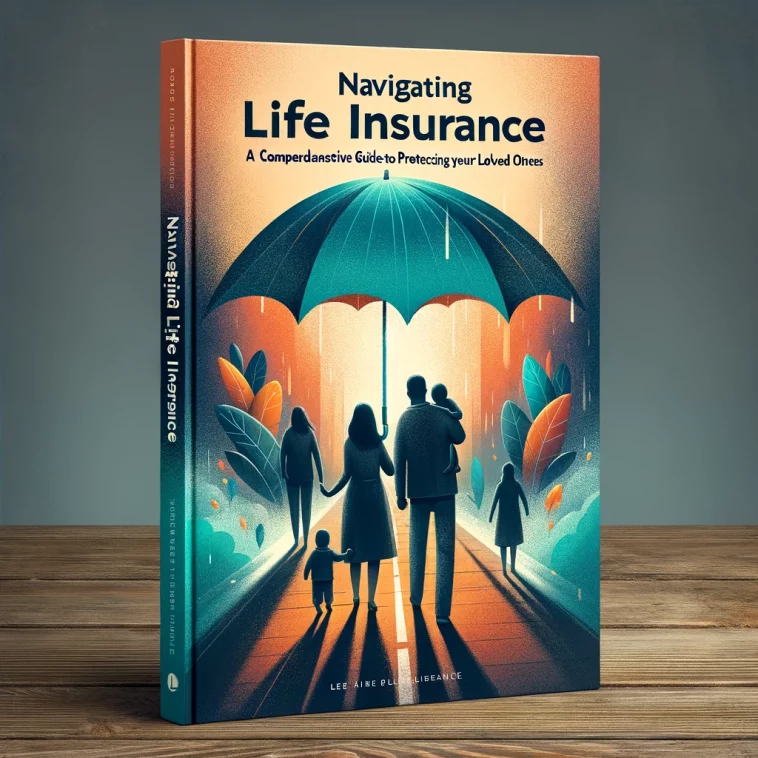Part 1: The Importance of Life Insurance
Life insurance is one of the most essential financial tools an individual can acquire. Often overlooked, its significance in protecting your family and your assets cannot be underestimated. In this first part of our article on life insurance, we will explore why considering this form of financial protection is crucial.
What is Life Insurance?
To understand the importance of life insurance, we must first define what it is. Life insurance is a contract between an individual (the insured) and an insurance company. In this contract, the insurance company agrees to pay a sum of money, known as the death benefit, to the designated beneficiaries of the insured after their death. In exchange, the insured pays regular premiums to the insurance company.
Financial Protection for Your Family
One of the most compelling reasons to acquire life insurance is to provide financial protection for your family. When you pass away, your loved ones may face various financial challenges, such as covering funeral expenses, paying off outstanding debts, and maintaining their current lifestyle. Life insurance can help ease these burdens by providing a tax-free payout to your beneficiaries.
Part 2: Types of Life Insurance
Now that we’ve established the importance of life insurance, let’s delve into the different types of life insurance policies available. Understanding the options will help you make an informed decision about the coverage that best suits your needs.
1. Term Life Insurance
Term life insurance is one of the most straightforward and affordable forms of life insurance. It provides coverage for a specific period, typically 10, 20, or 30 years. If the insured person passes away during the term of the policy, the beneficiaries receive the death benefit. However, if the policyholder survives the term, there is no payout, and the coverage expires. Term life insurance is an excellent choice for those looking for temporary coverage to protect their loved ones during specific life stages, such as raising children or paying off a mortgage.
2. Whole Life Insurance
Whole life insurance, also known as permanent life insurance, offers lifelong coverage. As long as the premiums are paid, the policy remains in force, and a death benefit is guaranteed. Additionally, whole life policies build cash value over time, which can be borrowed against or withdrawn for various financial needs. While whole life insurance provides lifelong security, it tends to have higher premiums compared to term life insurance.
3. Universal Life Insurance
Universal life insurance is another type of permanent life insurance that combines a death benefit with a savings component. Policyholders have the flexibility to adjust their premium payments and death benefit, making it a versatile option. The cash value in a universal life policy earns interest and grows tax-deferred, providing a potential source of funds for future financial needs.
4. Variable Life Insurance
Variable life insurance allows policyholders to invest the cash value portion of their policy in various investment options, such as stocks and bonds. While this offers the potential for higher returns, it also comes with greater investment risk. The death benefit and cash value can fluctuate based on the performance of the chosen investments. Variable life insurance is suitable for those comfortable with investment decisions and seeking potential growth within their life insurance policy.
In the next part of our article, we will discuss the factors to consider when selecting the right life insurance policy for your specific circumstances.
Part 3: Choosing the Right Life Insurance Policy
Now that we’ve explored the different types of life insurance policies, let’s discuss the key factors to consider when selecting the right policy for your unique needs and circumstances.
1. Determine Your Coverage Needs
Before choosing a life insurance policy, it’s essential to assess your coverage needs. Consider your financial obligations, such as mortgage payments, outstanding debts, and the future financial security of your family. The goal is to ensure that the death benefit from your life insurance policy will adequately cover these expenses and provide for your loved ones.
2. Assess Your Budget
Life insurance premiums vary based on the type of policy, coverage amount, and your age and health. It’s crucial to choose a policy that fits within your budget. While whole life and universal life insurance tend to have higher premiums, term life insurance is typically more affordable. Select a policy that you can comfortably sustain over the long term.
3. Consider Your Long-Term Goals
Think about your long-term financial goals. Some life insurance policies, such as whole life and universal life, offer a cash value component that can be used for future financial needs. If you’re interested in building a savings element within your policy, these options may be more suitable.
4. Evaluate Your Health and Age
Your health and age play a significant role in determining the cost of life insurance. Young and healthy individuals often qualify for lower premiums. If you have pre-existing health conditions, it may impact your eligibility or result in higher premiums. It’s advisable to secure life insurance coverage while you’re young and in good health to lock in lower rates.
5. Review Policy Riders
Life insurance policies often offer riders or additional coverage options that can be added to the base policy for an extra cost. Common riders include accelerated death benefit riders, which allow you to access a portion of the death benefit if diagnosed with a terminal illness, and waiver of premium riders, which cover your premiums if you become disabled. Review available riders to tailor your policy to your specific needs.
In conclusion, life insurance is a crucial financial tool that provides peace of mind and financial security for your loved ones. By considering your coverage needs, budget, long-term goals, health, and policy options, you can choose the right life insurance policy to protect your family’s future.
I hope you find this information helpful for your blog on WordPress. If you have any further questions or need additional content, please feel free to ask.

